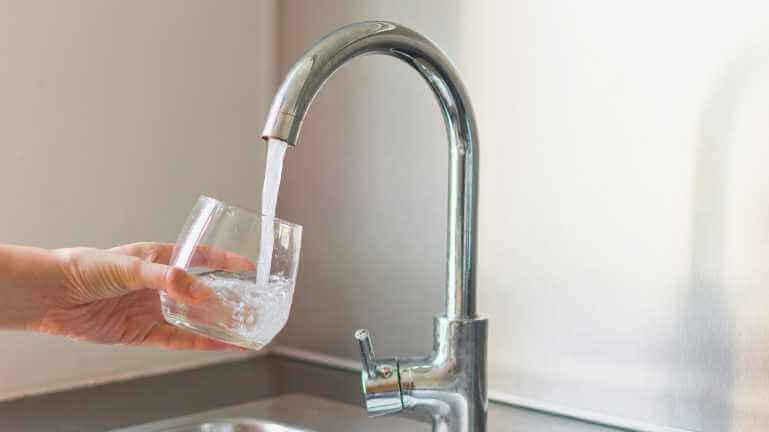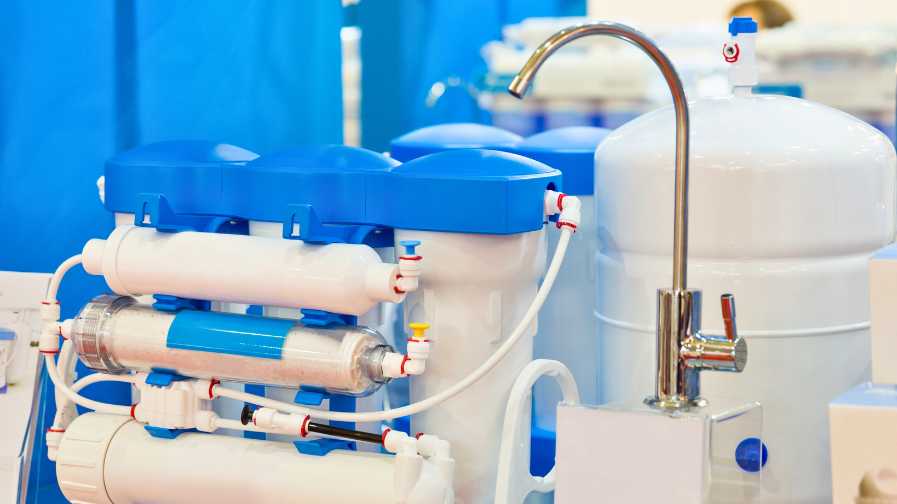In today’s world, where clean water is a luxury for many, the role of water filters in modern households cannot be overstated. These devices, often compact and unassuming, stand as the first line of defense against a myriad of contaminants that can find their way into our tap water. Beyond just providing clean water, they offer a glimpse into the intricate world of filtration, a process that, while often taken for granted, is the result of years of scientific research and innovation.
Basics of Water Filtration
Water filtration, at its core, serves a singular yet vital purpose:
Primary Goal of Water Filtration:
The main objective of water filtration is to provide safe, clean, and palatable water for consumption. This involves removing or reducing contaminants, sediments, and other undesirable elements that can affect the water’s taste, smell, and overall safety.
Physical vs. Chemical Filtration:
Physical Filtration: This method involves using a physical barrier, often a membrane or a fine mesh, to filter out larger particles from the water. It’s akin to sieving, where the water passes through, leaving behind larger contaminants.
Chemical Filtration: This process involves using chemicals or reactive materials to treat water. As water passes through materials like activated carbon, impurities are either absorbed or undergo chemical reactions, rendering them harmless.
Common Contaminants in Tap Water

Tap water, while generally safe for consumption, can sometimes contain a range of contaminants that can affect its quality and safety. Some of the most common include:
Sediments: These are tiny particles, often from soil or rocks, that can find their way into water sources. While not necessarily harmful, they can affect the clarity and taste of the water.
Chlorine: Used as a disinfectant in water treatment processes, chlorine can sometimes remain in the water in trace amounts. While it’s effective in killing bacteria, its presence can give water an unpleasant taste and smell.
Bacteria: Despite treatment processes, some bacteria can still remain in tap water. Certain strains can be harmful if consumed, leading to gastrointestinal issues.
The presence of these contaminants underscores the importance of having an effective water filtration system in place to mitigate potential health risks.
Types of Water Filters
The world of water filters is vast, with each type designed to tackle specific contaminants. Here’s a brief overview:
Reverse Osmosis: This process involves forcing water through a semi-permeable membrane, effectively removing a wide range of contaminants, including salts, bacteria, and sediments.
Carbon Filtering: Utilizing the adsorptive qualities of activated carbon, this method is particularly effective against organic compounds, chlorine, and odors. The porous nature of activated carbon allows it to trap these contaminants, purifying the water in the process.
Sediment Filters: As the name suggests, these filters are designed to remove sediments from water. They often act as a preliminary filtration stage, capturing larger particles before water undergoes further purification.
Each filter type targets specific contaminants, ensuring that the water we consume is of the highest quality possible.
The Role of Activated Carbon
Activated carbon, often derived from charcoal, plays a pivotal role in many water filtration systems. Its unique properties make it a powerful tool against various contaminants:
Magnet for Contaminants:
The porous nature of activated carbon allows it to act like a magnet, attracting and trapping contaminants within its structure. This process is especially effective against organic compounds, chlorine, and certain odors.
Carbon Absorption Science:
The effectiveness of activated carbon lies in its vast surface area, which provides ample space for contaminants to adhere. This adhesion process, known as adsorption, is what allows activated carbon to purify water effectively.
Advanced Filtration Systems
As technology advances, so do water filtration systems. One such advancement is:
FloWater:
A modern filtration system, FloWater utilizes multiple stages of purification, including activated carbon, to ensure water is of the highest quality. Its design aims to remove a wide range of contaminants, from sediments to bacteria.
Efficiency:
Systems like FloWater boast an impressive efficiency rate, claiming to remove up to 99% of impurities from water. This level of purification ensures that the water we consume is both clean and safe.
Importance of Regular Filter Replacement
Maintaining a water filtration system goes beyond just installing it. Regular maintenance, particularly filter replacement, is crucial:
Reduced Efficiency of Old Filters:
Over time, as filters trap more and more contaminants, their efficiency decreases. An old or clogged filter might not effectively purify water, leading to potential health risks.
Risks of Not Replacing:
Using a filter beyond its recommended lifespan can expose users to contaminants that the filter can no longer remove. Additionally, a clogged filter can strain the filtration system, leading to potential malfunctions or reduced water flow.
Regular filter replacement ensures that the filtration system operates at its peak, providing clean and safe water consistently.
DIY Water Filters
In an era of DIY solutions, even water filtration hasn’t been left behind. Many individuals and communities, especially in areas without access to commercial filtration systems, have turned to homemade solutions:
| Filter Type | Materials Needed | Cost | Filtering Capacity | Effectiveness |
|---|---|---|---|---|
| Charcoal Filter | Charcoal, Sand, Gravel, Cloth, Plastic Bottle | Low | 20-30 gallons | Removes large particles, some chemicals and odors |
| Ceramic Filter | Ceramic Candle, Plastic Bucket, Sand, Gravel | Medium | 500-1000 gallons | Removes bacteria, protozoa, and some viruses |
| Reverse Osmosis Filter | Membrane, Pressure Pump, Storage Tank | High | 50-100 gallons per day | Removes most contaminants including bacteria, viruses, chemicals, and heavy metals |
Homemade Water Filters:
The concept revolves around using readily available materials like sand, gravel, and charcoal to create layers of filtration. Water passes through these layers, with each one trapping different types of contaminants.
Efficiency Compared to Commercial Filters:
While DIY water filters can be effective in removing certain contaminants, they often lack the precision and efficiency of commercial filters. They might not be as effective against microscopic pathogens or chemical contaminants.
FAQs
Water filtration, while a common concept, often raises several questions. Here are some frequently asked questions based on the “People Also Ask” section for the keyword:
Do water filters really purify your water?
Yes, water filters are designed to remove or reduce various contaminants from water, making it safer and often better-tasting. The level of purification depends on the type and quality of the filter used.
How do water filters work naturally?
Natural water filtration often involves processes like sedimentation, where contaminants settle at the bottom, and filtration through layers of sand, gravel, and sometimes plants. These natural barriers trap and remove contaminants, purifying the water.
Is it safe to drink filtered water?
Generally, yes. Filtered water has undergone a process to remove contaminants, making it safer for consumption. However, the safety also depends on the quality and maintenance of the filter used.
How does a filter work for tap water?
Filters for tap water typically use a combination of physical barriers, like membranes, and chemical processes, like activated carbon absorption, to remove contaminants. As tap water passes through these filters, impurities are trapped or neutralized, resulting in cleaner water.
Conclusion
Water filtration, a blend of science and technology, stands as a testament to human ingenuity in ensuring access to clean and safe water. As we delve into its intricacies, from commercial systems to DIY solutions, one thing becomes clear: the importance of understanding and maintaining our water filters. This knowledge not only ensures our health but also promotes a sustainable approach to water consumption.

Mark is a seasoned Outdoor Equipment and Heating Appliances specialist. With a passion for adventure and a keen understanding of heating solutions, he brings expertise to the world of outdoor enthusiasts. Mark’s insights, gained through years of experience, make him a go-to resource for those seeking reliable guidance in navigating the realm of outdoor gear and heating technologies.

